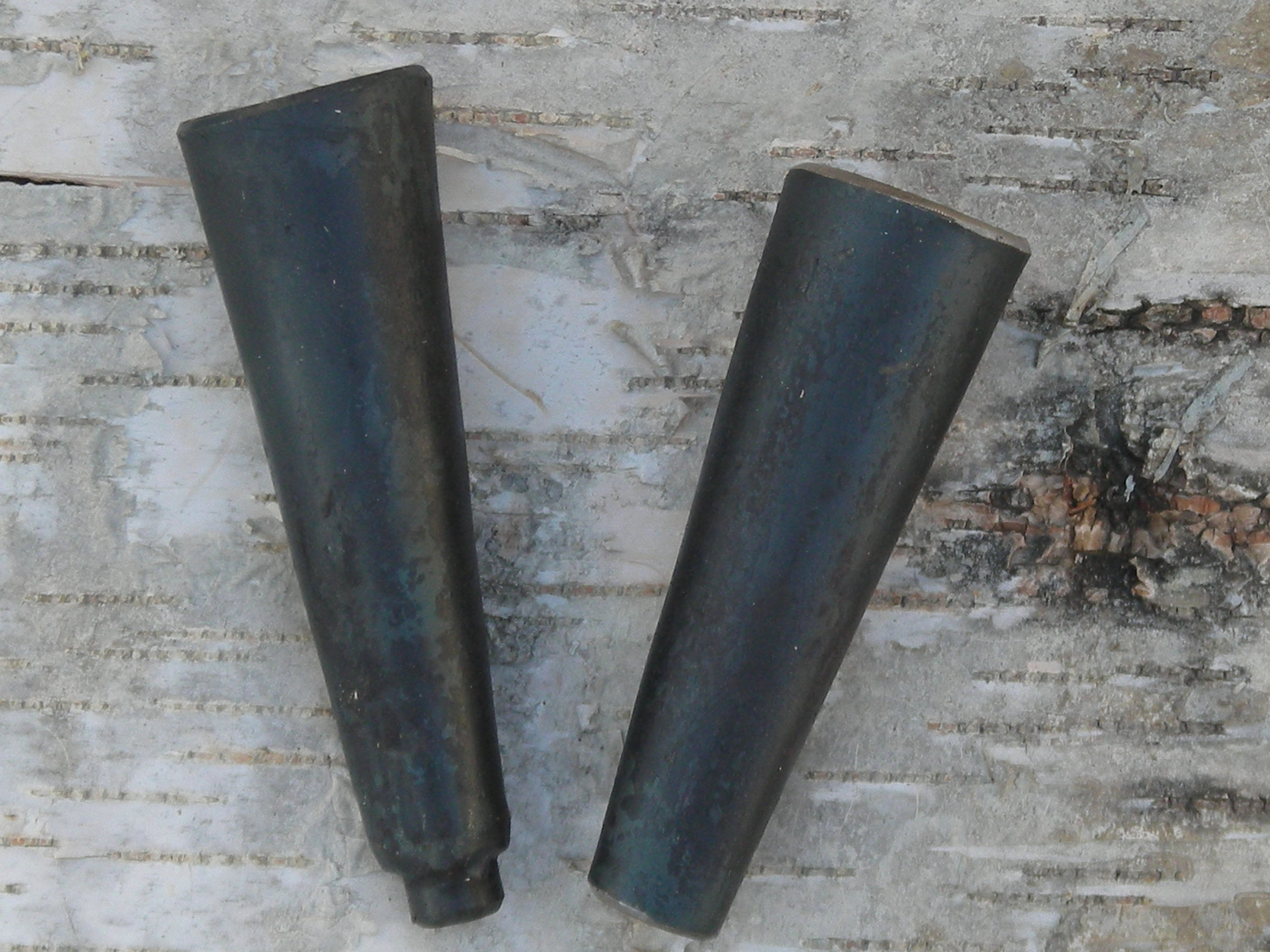Pole Shoes
-
Closed End Point
$30.00
-
Open Ended Point
$30.00

When I started poling in the early eighties (that was the year, not my age) good pole tips were hard to find and cherished by those who owned them. To pick up a pole with a decent tip attached brought on feelings of lust, and if the owner knew what they had, all the wheeling and dealing in the world couldn't get it away from them.
The first poles probably were bank cut or bank scrounged and had no tips. These poles were serviceable and you will still run across someone now and again using one of them. It wasn't long before people started dreaming up ways to improve the common pole. Most likely they'd have broken their pole or ran into some unexpected shallow water. The first thing they noticed was that in fast water the unshod pole didn't sink fast enough. It wanted to float and the fast water carried it backwards on each plant, losing part of each arc, resulting in lost momentum or a faster cadence. Maybe they next noticed that on certain bottom structures the pole didn't grab the way it should. Certainly if they didn't give up on this new fangled contraption and poled for any length of time, they noticed that their favorite pole wore out much too quickly. If they were from Maine it would be about this time that they would be thinking, "If I put a piece of metal around the tip of this pole I could do away with all of these problems." The problems are real but the time frame isn't because they probably didn't even know what metal was.
It's been said that the first real pole tips were created by blacksmiths for the lumber industry. They weren't for polling at all, instead they were for pushing logs around. Let's leave it at that, otherwise we might have to argue that all those make shift pole points we've been using for the past 20 years are but a reinvention of the wheel. When I started out the only places you could get pole tips on a regular basis was Snow & Neally Co. and Peavey Co., indeed both suppliers of the timber industry. Snow & Neally had a heavy iron tip and Peavey had a light iron tip, which I believe was actually a ferrule to go on a tool handle. I believe it was around the late eighties that Snow & Neally stopped making pole tips all together. It was around this same time that I discovered and purchased a hand forged tip from who knows how far back, and realized what a real pole tip was supposed to look like.
We hand forge these tips right here in the Pole and Paddle shop. We haven't reproduced that original tip. It was designed for the lumber industry and there it should stay. What we have done is modified it specifically for canoe work. We offer it in two variations, with a protruding point, and with an open point. These tips aren't cheap but good hand craftsmanship seldom is. They are worth every cent, WE GUARANTEE IT! If when you receive your tip you don't like it for any reason, send it back and we'll refund your money.

